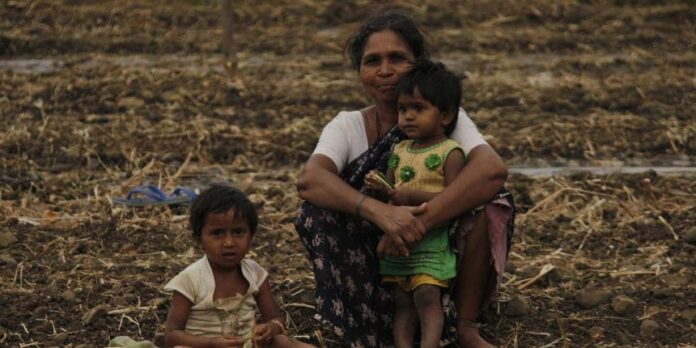Essay on Poverty- Students seeking poverty essay for their project or school exams can take reference from below. The given essay on poverty is just an example on how to write a poverty essay in English.
Essay on Poverty
Poverty is a pervasive issue affecting millions in India. It remains a complex socio-economic challenge for the growth of the country. Poverty means a lack of basic necessities such as food, shelter, and education that takes a toll on the well-being and aspirations of a significant portion of our population.
Causes of Poverty
Various factors contribute to the presence of poverty in India. India is the largest populated country where the consumption ratio is higher than the production. This also leads to a competitive job market and low wages. Lack of education and skills restricts job opportunities, perpetuating the cycle of poverty. Additionally, issues like unequal distribution of wealth, unemployment, and economic disparities further exacerbate the problem.
Rural-Urban Disparities
A significant portion of India’s impoverished population resides in rural areas, facing challenges like inadequate infrastructure, limited access to education, and a lack of healthcare facilities. Urban poverty, marked by slums and informal settlements, reflects challenges related to migration, unemployment, and a high cost of living.
Impact on Education
Poverty often acts as a barrier to education. Children from impoverished families may struggle to attend school due to financial constraints or may drop out to contribute to family income. Limited access to quality education perpetuates the cycle of poverty as individuals lack the skills needed for better job opportunities.
Healthcare Challenges
Poverty is intricately linked to health issues. Lack of access to clean water, sanitation facilities, and nutritious food contributes to the prevalence of diseases. Impoverished individuals often face challenges in accessing healthcare services, leading to a higher mortality rate and reduced life expectancy.
Government Initiatives
Recognizing the severity of poverty, the Indian government has launched various initiatives to alleviate the issue. Schemes like the Mahatma Gandhi National Rural Employment Guarantee Act (MGNREGA) aim to provide employment opportunities in rural areas. Poverty eradication programs and subsidies for essential commodities also contribute to the government’s efforts.
Role of Education
Education plays a pivotal role in breaking the chains of poverty. Government initiatives like Sarva Shiksha Abhiyan aim to ensure universal access to education. Empowering individuals with skills through vocational training programs enhances employability and economic independence.
Community Participation
Addressing poverty requires collective efforts. Non-governmental organizations (NGOs) and community-based initiatives contribute significantly to poverty alleviation. These organizations focus on providing healthcare, education, and livelihood support to marginalized communities.
Conclusion
In conclusion, poverty in India is a multifaceted challenge that demands comprehensive solutions. Through government initiatives, education, and community participation, we can work towards breaking the cycle of poverty, creating a more equitable and prosperous society. Empowering individuals with the tools they need to escape poverty ensures a brighter future for the nation as a whole.
20 Lines on Poverty
- Poverty is a global challenge affecting millions of people, regardless of nationality or region.
- Lack of access to basic necessities like food, shelter, and education characterizes poverty.
- Economic disparities, unemployment, and unequal distribution of wealth contribute to the prevalence of poverty.
- Rural areas often face more significant poverty challenges due to inadequate infrastructure and limited resources.
- Urban poverty is marked by informal settlements and slums, where people struggle with issues like migration and unemployment.
- Education is a key tool to break the cycle of poverty, providing individuals with the skills needed for better opportunities.
- Poverty can lead to health challenges, as individuals may lack access to clean water, sanitation, and healthcare services.
- Government initiatives like MGNREGA in India aim to provide employment opportunities and alleviate rural poverty.
- Subsidies for essential commodities and poverty eradication programs are part of government efforts to combat poverty.
- NGOs and community-based initiatives play a crucial role in providing support and services to impoverished communities.
- Lack of education often acts as a barrier to escaping poverty, as it limits job opportunities and economic independence.
- Poverty eradication requires a collective effort from governments, NGOs, and communities.
- Sustainable development goals include targets to reduce poverty and improve the living conditions of the impoverished.
- Income inequality is a significant factor contributing to the persistence of poverty in many societies.
- The cycle of poverty can be broken by empowering individuals through education and skill development.
- Access to healthcare is a fundamental right, and addressing healthcare challenges is essential in combating poverty.
- Social safety nets, such as welfare programs and financial assistance, can provide temporary relief to impoverished families.
- Microfinance initiatives empower individuals to start small businesses and generate income, reducing poverty.
- Poverty is often linked to social issues like discrimination and lack of opportunities for marginalized communities.
- Addressing poverty requires not only economic solutions but also a commitment to social justice and equality.
A Short Paragraph on Poverty
Poverty is a socio-economic issue of the country that is created due to a lack of essential resources for a basic standard of living. Millions around the globe are facing poverty, struggling to access adequate food, shelter, and healthcare. The consequences of poverty extend beyond material deprivation, affecting education opportunities and overall well-being. Families in poverty often face limited access to quality education and healthcare services, perpetuating a cycle of disadvantage. To eliminate poverty, governments should make comprehensive strategies involving NGOs, and community initiatives to ensure sustainable development, improved living conditions, and equal opportunities for all. Reducing poverty remains a global challenge, necessitating collective efforts for lasting positive change.
How to write an essay on Poverty?
While writing the essay on poverty, students should keep a few things in mind. Below are the tips to write a poverty essay.
- Make simple and short sentences.
- Words used should also be simple. Using difficult vocabulary can impact on the readability
- Highlights the important facts
- Break the long paragraph into short ones to make an essay about poverty impactful.






